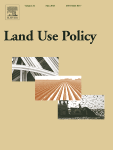Examining conservation policies' effects on forest cover
Add Summary

To restore forests and protect the remaining natural forests, the Chinese government initiated two nationwide conservation policies in the late 1990s – the Natural Forest Conservation Program (NFCP) and the Grain-To-Green Program (GTGP). But did they work?
Scientists at Michigan State University and their colleagues in China examined the massive programs to see how much forest cover changed between 2001 and 2008 in 108 townships located in two important giant panda habitat regions – the Qinling Mountains region in Shaanxi Province and the Sichuan Giant Panda Sanctuary in Sichuan Province.
Yu "Chris" Li, research assistant, and Jianguo “Jack” Liu, director of MSU’s Center for Systems Integration and Sustainability (CSIS) and their collaborators found that 94 percent of the townships had either an increase or no change in forest cover, suggesting that that the GTGP had a positive and significant effect on the annual forest cover change rate after seven years of implementation.
In addition to Liu, who holds the Rachel Carson Chair in Sustainability, and Li, "Effects of conservation policies on forest cover change in giant panda habitat regions, China" was written by Andrés Viña, assistant professor of fisheries and wildlife; Wu Yang, CSIS doctoral student; Xiaodong Chen, assistant professor of geography at the University of North Carolina-Chapel Hill and CSIS alumnus; Jindong Zhang, CSIS research associate; Zhiyun Ouyang, of the Chinese Academy of Sciences in Beijing; and Zai Liang, of the State University of New York at Albany.
The research was funded by the National Science Foundation and NASA.



 Print
Print Email
Email

